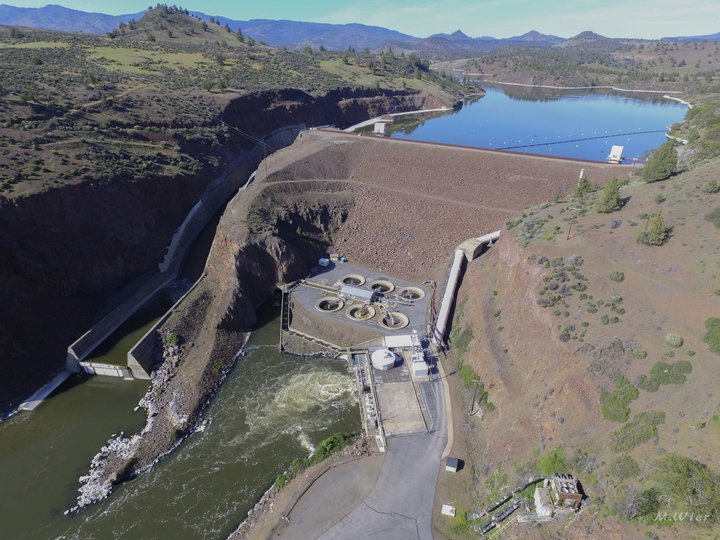Iron Gate Dam, one of four hydroelectric dams slated for removal on the Klamath River. | Michael Wier, CalTrout.
###
The public has just one week left to weigh in on the draft Environmental Impact Statement (DEIS) for the proposed removal of the lower four Klamath River dams – the largest river restoration project in American history.
The 990-page document, which was released by the Federal Energy Regulatory Commission (FERC) in February, contains the evaluation of the environmental, cultural and economic impacts associated with dam removal, as well the potential consequences of a “no-action alternative.”
Removal of the four dams on the Lower Klamath River will open 420 miles of salmon spawning habitat as well as improve water quality and reduce critical temperature conditions that cause disease in threatened salmon species. Under the “no action alternative” the Lower Klamath Project would continue to operate as it does today.
“There would be no disturbance of existing environmental conditions at the site, and there would be no new environmental protection, mitigation, or enhancement measures,” the DEIR stated. “…The no-action alternative would not address the water quality and disease issues which, when combined with the ongoing trend of increased temperatures, pose a substantial risk to the survival of one of the few remaining Chinook salmon populations in California that still sustain important commercial, recreational, and Tribal fisheries.”
FERC’s relicensing proceedings would resume under the “no-action alternative” and it would have to determine “whether and under what conditions to relicense the project,” according to the DEIS. The current licensee, PacifiCorp, decided not to seek a license for the project and, as it stands, no other entity has come forward to continue operating the project for hydropower generation.
“Until a surrender order is issued, the project features would be maintained and operated by Klamath River Renewal Corporation (KRRC) and the states [of California and Oregon],” the DEIS continued. “Ultimately, the project would have to be either relicensed or decommissioned because perpetual annual licensing is not authorized under the [Federal Power Act].”
Under the proposed action listed in the DEIS, the Lower Klamath Project would be decommissioned as proposed by PacifiCorp and the KRRC “with the inclusion of all of their proposed mitigation measures” and conditions issued by the California Water Board and the Oregon Department of Environmental Quality, as well as the biological opinions issued by the National Marine Fisheries Service and the U.S. Fish and Wildlife Service.
Comments on the DEIS may be submitted through April 18. Following public review, FERC will put together the final EIS and issue a permit for dam removal.
If everything goes according to plan, dam removal is slated to begin in early 2023.
The DEIS can be found here.

CLICK TO MANAGE